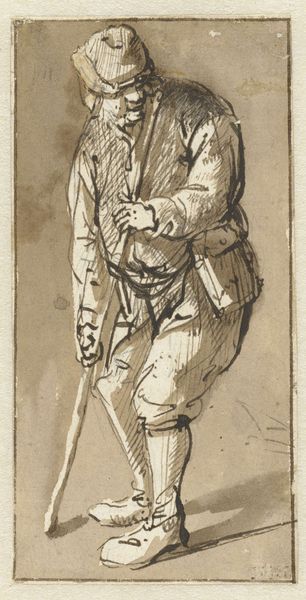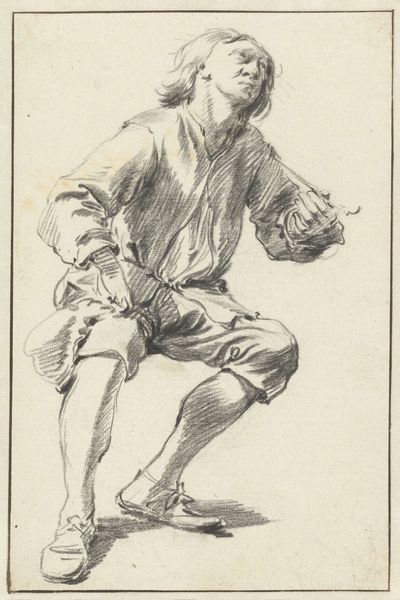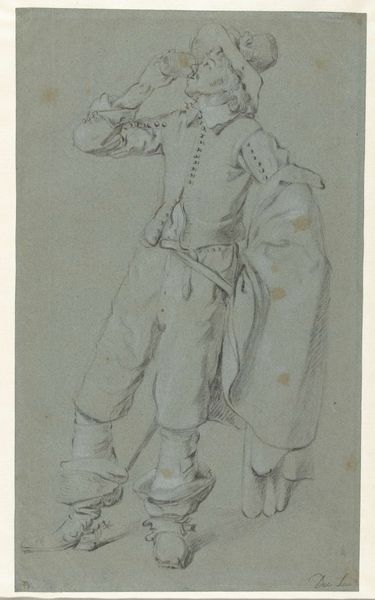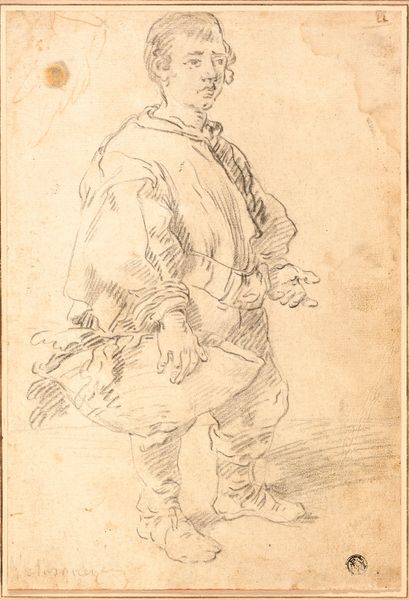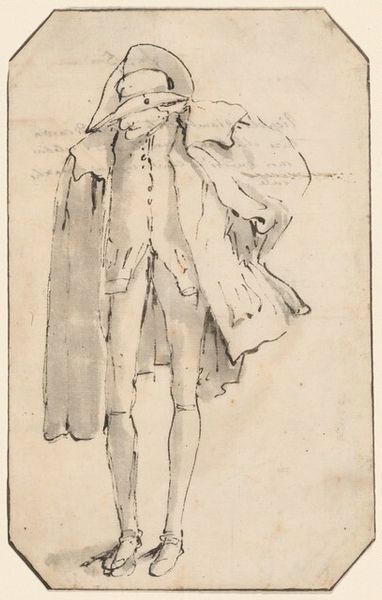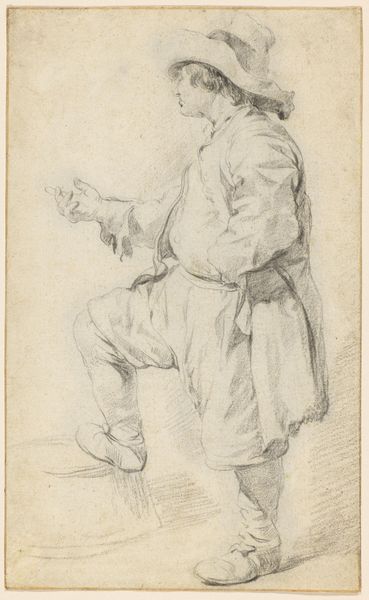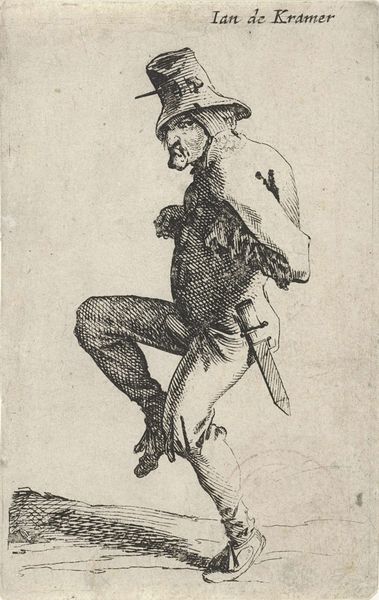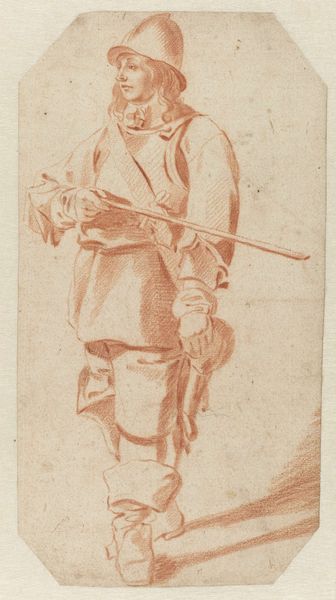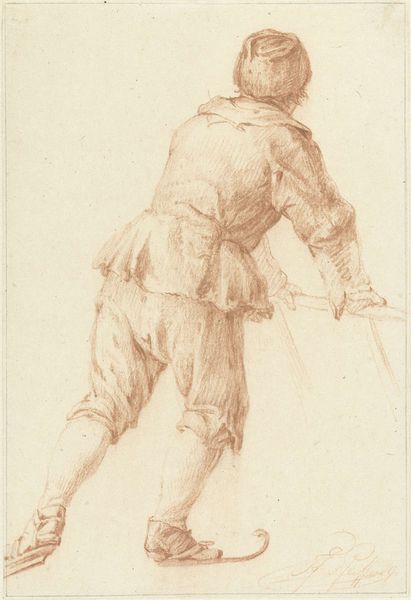
Dimensions: plate: 14.7 Ã 9 cm (5 13/16 Ã 3 9/16 in.)
Copyright: CC0 1.0
Curator: At the Harvard Art Museums, we have a small etching, "Guillot" by A. Claude Philippe de Thubières comte de Caylus. Editor: There's a vulnerability to this figure—a sense of being caught mid-motion with his back turned. I see Harlequin, but with the mirth stripped away. Curator: Caylus was known for his interest in classical antiquity and his role as an early art historian. "Guillot" seems to tap into commedia dell'arte traditions but with a notable sparseness. It's a reproduction of a Watteau drawing. Editor: Absolutely, the lone figure certainly evokes that theatrical world, but its stark lines almost feel like a stage stripped bare, the costume itself becoming the symbol. Curator: It reflects the evolving social dynamics of the 18th century, where theatrical imagery infiltrated various levels of society and artistic production. Editor: A poignant reminder that even in comedy, there can be undertones of melancholy and social observation. Curator: Exactly, and the image continues to resonate today, reminding us of the power of art to capture complex human emotions.
Comments
No comments
Be the first to comment and join the conversation on the ultimate creative platform.
